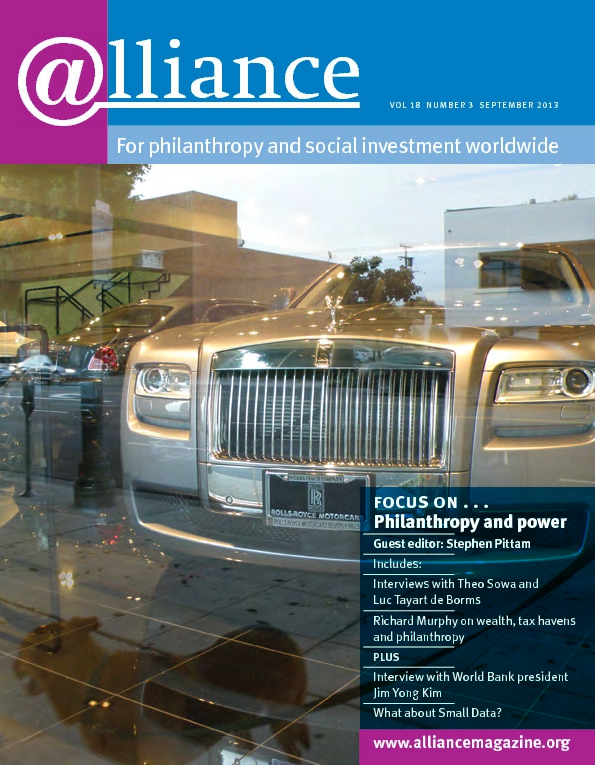Karla Simon’s clearly written, meticulously researched book admirably fills the pressing need for a comprehensive overview of philanthropy and civil society in China. There have been historical studies of philanthropic and associational activity in China during its long history prior to 1949 and many studies of philanthropy and civil society in China during the reform period (1980s to the present). But there has never been a study that has bridged the gap.
Simon’s book provides an overarching account of the evolution of philanthropy and civil society from the Qin dynasty to 2013. The book, which runs to 373 pages (plus 125 pages of appendices, bibliography and index), could be described as a play in three acts. Act 1 consists of four chapters that provide separate overviews of the legal traditions, and charity and associational life, in imperial China. Because they treat the two topics separately, the relationship between the two is only suggested. But the chapters do provide a glimpse of the diversity of associational life in China during this period.
The focus on the legal framework for civil society does not come to the fore until Acts 2 and 3. In Act 2, Simon examines the legal framework for charitable and associational activity that was constructed after the fall of the last dynasty in the first half of the 20th century, and the heavy-handed way in which the socialist state created a monopoly on associational activity after 1949 by setting up GONGOs (government-organized NGOs) known in Chinese parlance as ‘mass organizations’. In these middle chapters, Simon shows how the legal framework that emerged in the 20th century bore the imprint of Qing dynasty laws as well as the Japanese and French civil codes, which gave greater discretion to the state in regulating associational life. These historical influences, she argues, are important in shaping the state-centric legal framework that emerged in the reform period after Mao’s death in 1976.
The creation and evolution of the legal framework from the 1980s to the present is the subject of Act 3, which consists of seven chapters and constitutes the heart of this book. While the previous chapters are based on secondary sources, these draw on Simon’s own role in consulting for the Chinese government over the last two decades, her conversations with Chinese scholars and officials, and her own extensive expertise in the legal frameworks of other countries. She provides detailed analyses of some of the main laws and regulations, such as the registration regulations for the three main types of CSO (social organizations, private non-enterprise units and foundations), and even the eagerly awaited Charity Law (Simon has access to a draft of the Law), which has been in legislative limbo for the past few years. A number of these laws, regulations and reforms have been discussed piecemeal in other sources, but this book contains the most comprehensive discussion and analysis of them. These later chapters include valuable discussions of areas that have not been covered in other book-length studies, such as the documentation system used by a number of localities for overseeing community civil organizations (CCOs), local reforms in the tax and fundraising regulations, and an entire chapter on the legal framework for religious organizations.
In illuminating China’s long continuous history of philanthropy and associational activity, Simon makes a number of valuable contributions. One is to show that China’s current fascination with charity and non-profits is not an aberration or foreign transplant but builds on a long tradition of charity and associational life. Second, her detailed description of the legal framework’s evolution during the 20th century provides some insight into the immediate historical influences shaping the current framework. Previous studies tend to give short shrift to the immediate antecedents of the current system. Chapters 8-14 in particular give us a clear picture of gradual but largely progressive changes taking place in the legal framework over the last three decades. Finally, the last chapter, which examines legal developments in the civil society sector in other Asian countries, provides a valuable comparative context for understanding developments in China and suggestions about which countries might serve as models for China.
Simon has performed an important service in writing this book, which should become the standard reference for the philanthropic and civil society sector in China.
Shawn Shieh is director and editor, China Development Brief (English). Email shawn.shieh@chinadevelopmentbrief.cn
To order
http://global.oup.com/academic/product/civil-society-in-china-9780199765898?cc=gb&lang=en&
Civil Society in China: The legal framework from ancient times to the ‘New Reform Era’
Karla Simon Oxford University Press $75/£45
ISBN 9780199765898





Comments (0)